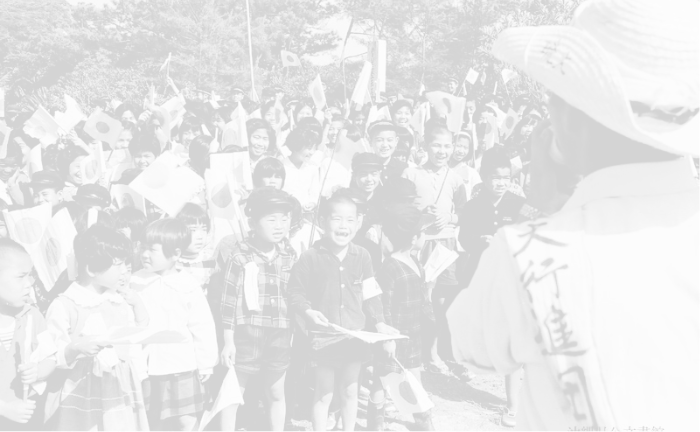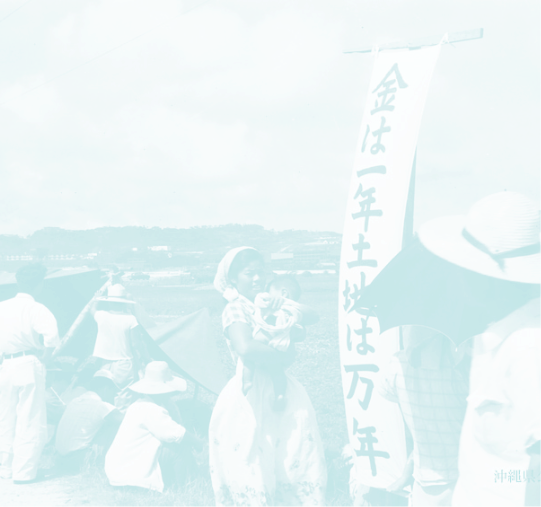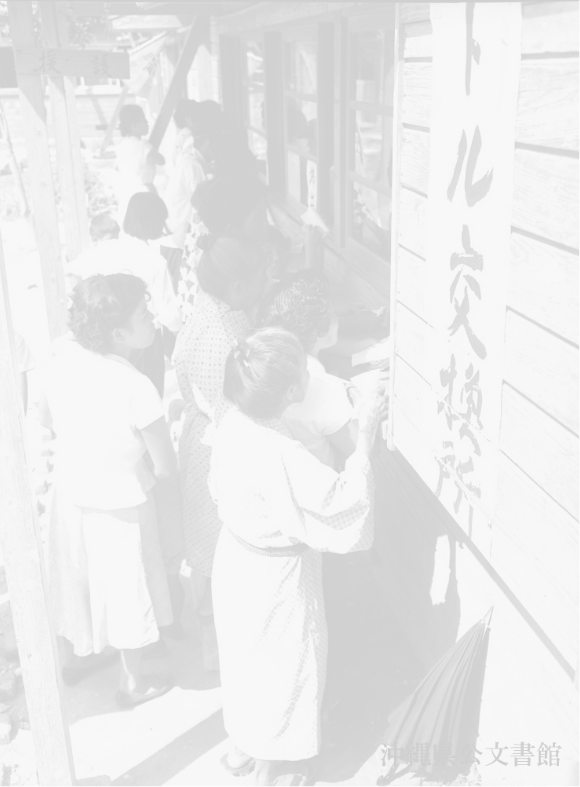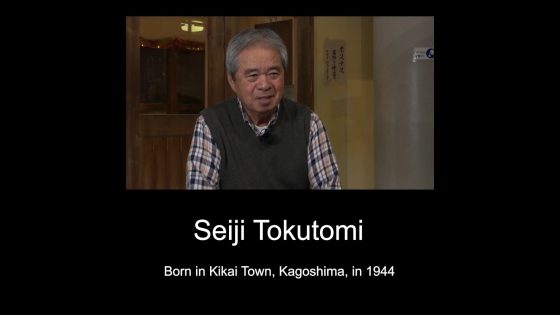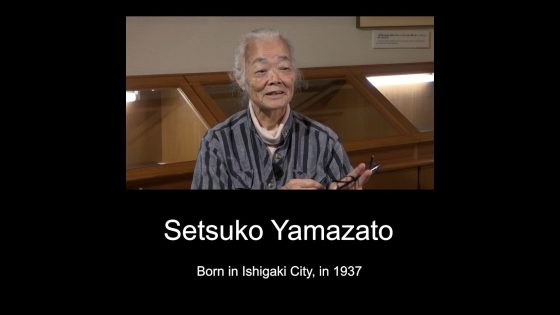
Life of the Yaeyama Settlers and Malaria
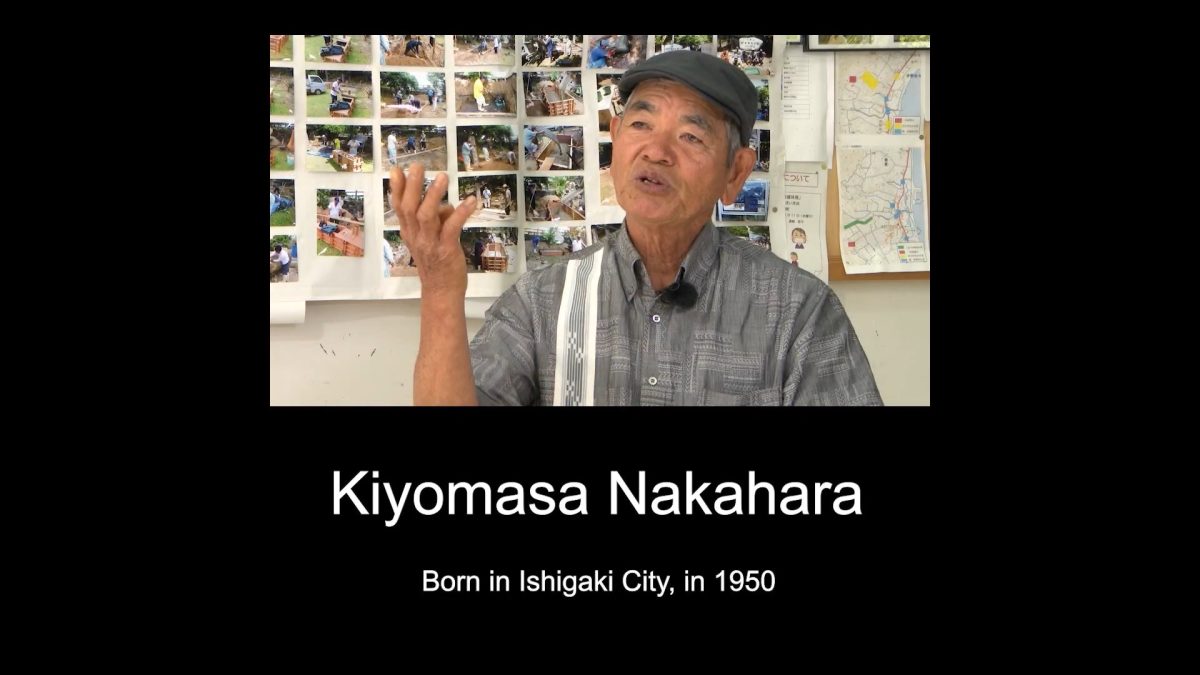

- Born in 1950
- Kiyomasa Nakahara
Timeline
| 1950 |
Born in Ogimi Village.
|
|
|---|---|---|
| 1950 |
Established the Yaeyama Public Health Center and set up a branch in Inoda to prevent malaria.
|
|
| 1951 |
Moved with his family to Inoda, Ishigaki Island, as a pioneer immigrant.
|
|
| 1951 |
On October 31, the anniversary of the settlement of Inoda.
|
|
| 1952 |
Outbreak of tropical febrile malaria in Inoda settlement.
|
|
| 1957 |
The "Wheeler Plan" for the eradication of malaria by the American medical zoologist Dr. Wheeler was implemented. (until 1959)
|
|
| 1960 |
Inoda Eisa was performed for the first time on the anniversary of settlement.
|
|
| 1962 |
Zero cases were achieved and Yaeyama malaria was eradicated.
|
|
| 2022 |
In January, the Yaeyama Zero Malaria Monument Erection Committee was founded.
|
|
| 2022 |
On August 20, the "Yaeyama Zero Malaria Monument" was erected to commemorate the 60th anniversary of the achievement of zero malaria cases.
|
Story
Brief biography of the witness
A second-generation pioneer immigrant who knows the hardships of the pioneers who settled in the Inoda area of Ishigaki Island. He is involved in activities to pass on the history of postwar malaria prevention as a record. He is actively involved in passing on the history and culture of the region, serving as director of the Inoda Community Center and chairman of the Yaeyama Malaria Achievement Monument Erection Committee.
As a pioneer immigrant after the war
Moving from Ogimi Village to Ishigaki Island
My father emigrated to the Philippines before the war. When Japan began losing the war, my family and I left the country. At that time, my father had his first wife and six children, but his eldest daughter was adopted by a childless man in Ogimi Village, in Yanbaru, and the other five children were taken to the Philippines. After Japan’s defeat, the family came back to Japan. Everyone had been doing well until the end of the war, but his wife died first when going back to Nagasaki. After that, all the children died. Only my father survived. He returned to his hometown of Ogimi Village in Yanbaru, with the remains of his family. Apparently there were a lot of people with similar circumstances.
There weren't enough farm fields to make a living in Yanbaru, the northern part of Okinawa’s main island. Even if there were terraced fields, it was difficult for everyone to making a living on them. When people who had been repatriated from all over the country gathered to discuss what to do, the story of the Yaeyama immigrants came up. First, 21 people became the first wave of immigrants. The second wave came a year later. This was how we came to Ishigaki Island.
Settling in Inoda
In 1950, one year before we came to Inoda, pioneer immigrants settled in Hoshino. Inoda was settled one year after Hoshino. There were many immigrants from Ogimi Village in Hoshino as well. They had heard many good things about Ishigaki, and they seemed to be looking around for a settlement, relying on someone who had come to Hoshino a year earlier.
Three people came first as the starting team and looked around. They also received a budget from Ogimi Village to come and do an inspection. Around August, they came to Ishigaki Island to investigate, and around September, they started preparations for settlement. They started recruiting people who wanted to settle there, and they decided to go there as immigrants around September. Settlers had come to Hoshino a year ago and had relatives there.
At first, they were accepted in Hoshino. From Ogimi Village, 21 people and their families departed in September. Everyone couldn’t get on the ship at once, so we came in two groups. Here's what I find amazing about the settlers. They came to Inoda in September, and by October 31, they had built 21 houses large enough for whole families. There was no sawmill and no roads. They cut down trees from the mountains and built houses together. It wasn’t just about whose house it was, it was about building households together. As they were completed, the houses were numbered. “1,” “2,” and so on. We were assigned houses by number, through a random drawing.
Anniversary of Settlement and Formation of Tribe Association
By October 31st, everyone was able to move into their own homes. So, October 31 in 1951 was set as the anniversary of Inoda's settlement, and commemorative events were held for the 50th and 60th anniversaries of the settlement. The Inoda Village Association was formed when a public health center branch office was established as a malaria prevention station, and the people who were here built a tenement house. At the time, there was no such thing as a community center. Since we came here in 1951, there was no community center building yet, and the following year, in 1952, the Youth Association was established, and in 1953, the Youth Training Hall was built, and this hall became a hub for the area, a place where people could gather and have discussions, much like a community center.
Life in the settlement of Inoda
Inoda Village
At that time, there were many children, even just in Inoda. There were villages such as Inoda, Hoshino, and Ozato in this area. The average family in our generation had around six kids. The average family size was large, with some houses having around 10 people. I also have six siblings. My father lost five children when he came back from the Philippines. He remarried and came here, and had five more children and here we are. I believe that we are reincarnations. I was born when my father was 50. I'm really grateful to my father. Ever since I was in elementary school or even kindergarten, everyone in my neighborhood dressed the same, and the buildings had the same thatched roofs. Also, when everyone first settled there, there were no pineapples or sugar cane. When I was in kindergarten, people grew rice there on dry ground, but you won’t see that now. They also grew many other crops, such as wheat and peanuts. At that time, I think there was a wide variety of food available in the area. There were a lot of papayas, banshiru [guavas], etc.
Everyone’s Roles in Daily Life
Even in elementary school, children had jobs. Even though we say we played, we were given work from an early age. Whether you were a family of 5 or 6 or 10, everyone always had a job to do. Girls and women did things like cleaning and cooking. Boys and men did things like chopping firewood and tending the gardens. At that time, we didn’t use gas or charcoal. The fuel used in the kitchen was firewood. So when I went to the fields, I didn't just come back empty-handed. I always brought firewood with me. And every family fed goats. In every household, cutting grass for goats was a child's job, to earn watakusa [pocket money]. When I was in the 5th or 6th grade of elementary school, or junior high school, I started cutting grass for the horses. It wasn't just me. It was the same for all my friends. We would cut the grass together, and come home on horseback. In the days when there were no tractors or tillers, horses were important. In Inoda, horses were used, and in Shiraho and other places, water buffalo were used for plowing. In Inoda, no one used water buffalo to plow or farm the fields. Mostly just horses. I worked with horses for plowing once I was in 4th or 5th grade. At that time, even the work of cultivating the fields was done with horses.
When pineapple cultivation became possible, pineapple fields spread all the way to the back of the mountain. As for transportation, we also used horses. So when we went to the mountains, the children handled the horses and the adults harvested the pineapples. We carried them from morning to night. Horses can carry approximately 200 kg of cargo. Therefore, I calculated that carrying 200 kg five times would add up to 1 ton of pineapples. Houses with lots of fields had two or three horses for transportation.
The Food Situation at the Time
Back then, there was no TV or anything, so when my father came home from work in the evening, he would have a drink and go to bed early. The next morning, he would wake up around 4:00 a. m. I remember my father cooking sweet potatoes in a big pot almost every day. There was not a single household at the time that did not feed pigs. Every household kept pigs. There were no refrigerators, but they raised pigs as food. For example, when there was a celebration, they would slaughter a pig and butcher it. You couldn’t eat it all at once. You’d have to preserve it by salting it. Back then, every house had one or two bags of salt. Around December 30th, we could hear pigs squealing in every house. In each household, the children were responsible for holding down the pig's head. The father would bring a stick and tell them to hold the pig's head down. Then, he would stab the pig with a knife and collect the pig's blood. We didn't throw away the pig's blood. It was delicious in miso soup or tonjiru soup. When I was a child, I would see scenes like that. The parts of the pig we couldn’t eat were left in salt in a hemp sack, which could be eaten after a month or two after being rinsed off. The meat was preserved by salting it. So, in order to be self-sufficient, we harvested mozuku seaweed and salted it, and we also salted pork.
The Food Situation at the Time
When we first came to Inoda, there were very few wells, and about six rivers we could use. There were about six rivers within a radius of about 2 km, and even when I was a child, I used to bathe in the rivers. My mother also took a washtub when she did laundry. We would do laundry in the river and chat. We used a hard soap called Adeka soap, instead of laundry soap. As land development settled down, people started digging wells here and there, and people started using wells because then they didn't have to go to the river.
After a while, the Ryukyu government used the US Civil Government's High Commissioner funds, and they started bringing a simple water supply to this remote area. The water supply ran towards the houses, but not much water came from it. We used water from a simple tap alongside the well water. It was about 50 years after settlement when Ishigaki’s city water system was connected to Inoda.
Pine industry and Eisa in Inoda
Yaeyama’s Pineapple Industry
I think it was around the time I entered elementary school that Inoda was able to grow sugarcane and pineapples like it does today. Before, no matter what I did or what I made, it wouldn’t turn out to be anything, and I couldn't even make a living. It was a harsh environment, and there were big typhoons. So, it seems that they desperately searched for crops that are resistant to typhoons. Pineapples are good because they won't die or get knocked down even if a typhoon comes. As we searched around the island, we found a person from Taiwan planting pineapples in Nagura. In Nagura, there was a pineapple factory. They probably made canned pineapple. We wanted to plant pineapples, but when we came here as pioneer immigrants, we didn't have any money. So we negotiated with the person from Taiwan in Nagura, who was growing pineapples, to give us one pineapple seedling, and then we’d give back two in return. So we were able to get the seedling for free. This would mean that people who borrowed 100 plants would give back 200 plants in return. This worked out spectacularly, as pineapples had not yet been planted elsewhere. When Inoda took the initiative to grow pineapples, many people from Yanbaru, on the main island of Okinawa, came to buy pineapple seedlings. Customers who came to buy them would line up with their bags, in the pineapple field. They packed the seedlings one by one into their bags, and took them home. Thanks to the success of pineapple cultivation, Inoda earned the nickname “1,000 dollar farmers. “The area flourished to the point where tourist buses came to visit the farm roads. In the heyday of pineapple farming, Inoda earned the nickname “1,000 dollar farmers,” for the successful pineapple farmers here. There were two or three day laborers in each household. When we were in junior high school, elementary school students got 50 cents and middle school students got $1 if people hired children for part-time work or help. Women harvested sugar cane from morning till night and would make about $2. Men would get $2.50. So when it came time to harvest sugar cane, I got 50 cents for an hour's part-time work loading the car in the car early in the morning.
During peak pineapple season, there would be places with two, three, even five or six day laborers. Since pineapple farming was good, people grew more and more of it, and four or five large pineapple companies were established, but the industry did not last long because the market was liberalized and pineapple started to be imported from foreign countries. We couldn’t compete. Pineapple farming stopped and all the pineapple factories went bankrupt. Not a single one of these companies remains today.
Many of the settlers were from Yanbaru, especially from Tadakazato in Ogimi Village. There was a traditional Eisa dance that everyone did together, called Takazato Eisa. The settlers were all young men, so they could dance and sing local songs. Some of the people who settled here were able to sing local songs. Even in Takazato, Eisa may have continued for a while. After that, Eisa was no longer performed in Takazato. But we in Inoda remember our mother village. It was about 10 years after we settled here. In Inoda, we danced Eisa for the first time 10 years after we moved here. We did it for the 10th anniversary, then the 15th anniversary, then the 25th anniversary…. It has only been danced about 10 times so far. On the occasion of the 60th anniversary of the settlement, we worked hard to make a “preservation version” video of Eisa and asked for everyone's cooperation. We brought Takazato Eisa, and added Miyako's Kuicha, since a quarter of the people were from Miyako, to make it an Inoda-style Eisa. Inoda's Takazato Eisa involves supple movements, and can be danced by both a man and a woman for a long time. I think this is a wonderful dance that everyone can dance with just one drum. It's not flashy, but I think everyone can learn it as they listen and dance to the song. This remains to this day because of the pioneers' feelings for their hometowns and their strong desire to continue this tradition in Inoda. We decided to preserve Eisa as a commemorative project for the 60th anniversary. I believe that preserving traditional performing arts such as Eisa does not mean changing them into something more lively, but also not just leaving something unchanged as a tradition. Hopefully it will continue forever. I would like this Eisa to remain as a tradition of Ishigaki [Inoda].
Monument to Commemorate the Settlement
The settlement memorial monument in Inoda is the work of two people: Koichi Maehara and Kiei Nakamura, who poured their efforts into developing Inoda. They worked harder on the local community than on their own homes and worked hard to make the area a better place to live, saying “Let's create a place for everyone to gather when they visit Inoda. The park and mountain here are about 7,000 square meters in size. For five years, they have been trying to turn the site into a park for their children and grandchildren.
In the Yaeyama area, there is the Yaeyama Kyouyukai Isshin-kai. From Ogimi Village, immigrants not only come to Inoda but also to Otomi [Iriomote, Taketomi Town]. Chujiro Yamaguchi and others formed the Isshin-kai so that settlers from Ogimi Village could come together and interact with each other. The Ogimi Village Isshinkai 50th Anniversary Ceremony was held at Inoda Elementary School. After moving in, we continued to go to senior citizen gatherings and sports days together, and interacted with each other once a year.
Prevention of Malaria after the War
Prevention of Malaria after the War
About a year after we moved here, there were hundreds of malaria cases. As many as four or five people in a household would have malaria. Or so I heard, but I never saw anyone in my classes or my age who had malaria. I remember very well how the public health center disinfected the area. Especially from when I was in kindergarten to junior high school. Twice a year, in spring and fall, the city cleaned and disinfected every corner of the house, even under the floors behind home Buddhist altars and on the ceilings. At that time, all the houses had thatched roofs. There were white disinfectant marks everywhere. It remained white because it was a solution with the insecticide DDT dissolved in it. It wasn’t just inside houses. Everything around the toilets, warehouses, cow sheds, and stables was also disinfected. DDT was spread everywhere. A public health center was also nearby, and from the beginning, disinfection of various areas was strongly promoted. About a year after settlement, many people caught malaria, so they did a thorough disinfection. I believe that the cooperation of village residents was essential for this. What I remember is, the public health center stocked a lot of medicine and had a tricycle-like vehicle. Not like the small pickup trucks of today. They carried things like sprayers and medicine on the back of the tricycle. Before settlers came to Inoda, there was a medical assistant named Renko Tomino. The Yaeyama Public Health Center may have had support from the Ryukyu government and the US, from the beginning, to thoroughly prevent malaria. I think it's amazing that it was done so thoroughly. If you look at history, malaria has been thoroughly eradicated. I think this will become a model for the world. I think Dr. Wheeler, who developed the plan to eradicate malaria, is amazing.
Erection of a Monument to Zero Malaria
Monument to Zero Malaria
Last year (2022), the malaria stone monument was erected. When Dr. Mika Saito of Ryukyu University and four to five other related people came to the island, we showed them where the health center used to be. At that time, I didn't really understand what the teachers were trying to say, because malaria had been so completely forgotten in Inoda that I had never even heard of it. According to Dr. Mika Saito, the outbreak of malaria has disappeared, and last year [2022] was also a turning point, marking the 50th anniversary of Okinawa’s return to Japan, and the 60th anniversary of achieving zero malaria. So this fact was passed down by setting up a stone monument and an explanatory board at the site of the base so that the world can learn about the great achievement of the elimination of malaria from Yaeyama. We asked the residents of the village to do the work to erect the stone monument. With everyone volunteering, we were able to unveil the stone monument and hold a commemorative ceremony on August 20, a day related to malaria. As I researched malaria for this project, I came to believe that the history of eradicating malaria in Yaeyama should be passed on to future generations. Around the world, 100 million people still catch it, and 400,000 die. So how was malaria eradicated in Yaeyama? I hope we can pass this on to future generations through stone monuments and explanatory plates.
